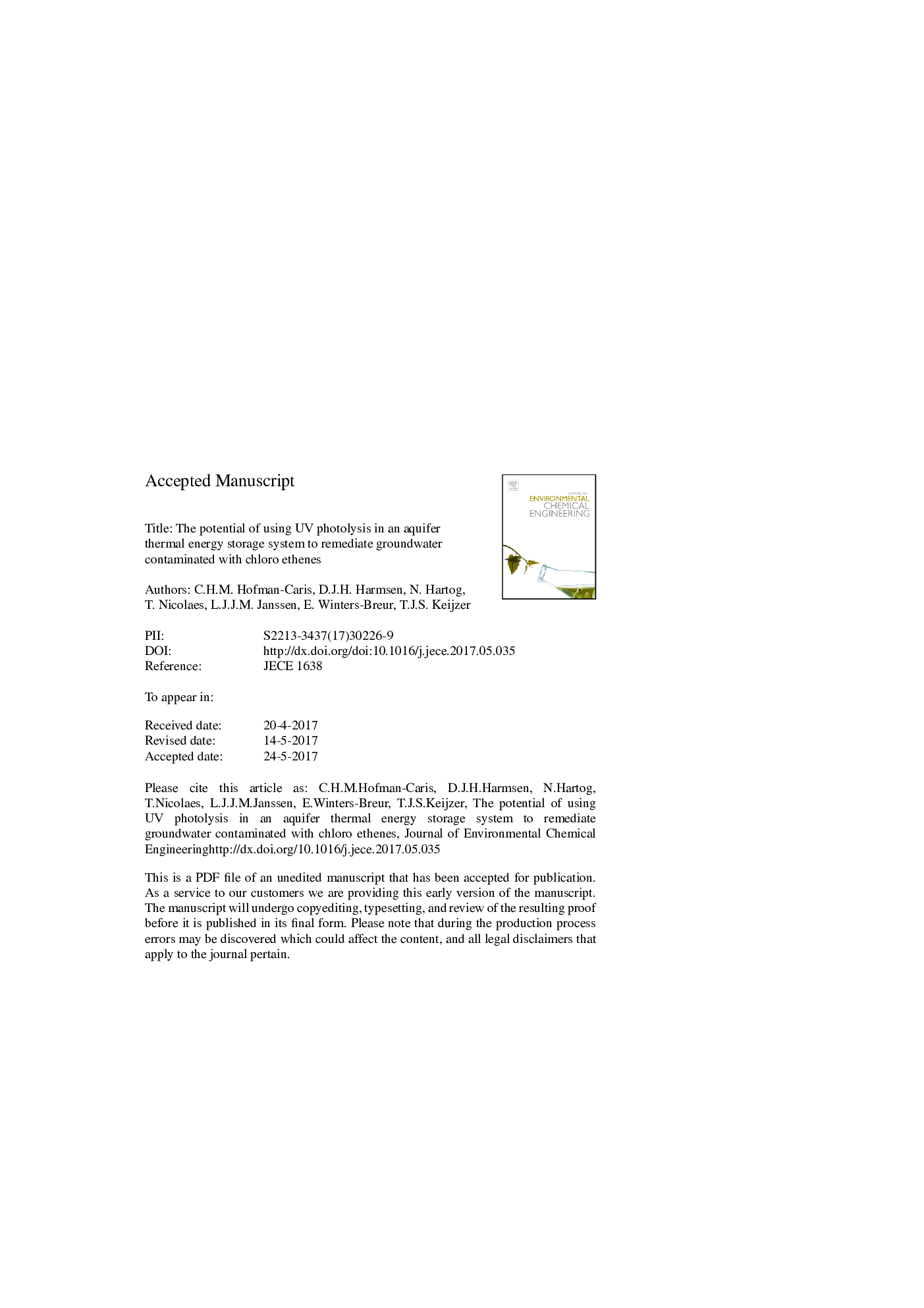| Article ID | Journal | Published Year | Pages | File Type |
|---|---|---|---|---|
| 4908438 | Journal of Environmental Chemical Engineering | 2017 | 17 Pages |
Abstract
In several places in The Netherlands, industrial areas are redeveloped into residential areas with sustainable heating systems based on aquifer thermal energy storages (ATES). At these sites, groundwater is contaminated with chlorinated ethenes. In this project various pilot set-ups were tested as a non-invasive technique to remove chlorinated ethenes from contaminated groundwater by integrating a UV reactor into the ATES system. It was demonstrated that per- and trichloro ethenes (PCE and TCE) can be photolyzed by LP UV-lamps up to 10-20% at a relatively high dose of 500Â mJ/cm2. However, the photolysis of cis-dichloro ethene (DCE) and vinyl chloride (VC) was limited to maximum 5%. In addition, it was found that, during the photolysis trans-DCE may be formed, which usually is not observed in biodegradation pathways of chloroethenes. As the groundwater composition at a certain location may show significant variations in time (concentration differences of a factor 2-3 were no exception during the various experiments) it is important to adjust the system to the range of concentrations that can be expected.
Related Topics
Physical Sciences and Engineering
Chemical Engineering
Chemical Engineering (General)
Authors
C.H.M. Hofman-Caris, D.J.H. Harmsen, N. Hartog, T. Nicolaes, L.J.J.M. Janssen, E. Winters-Breur, T.J.S. Keijzer,
